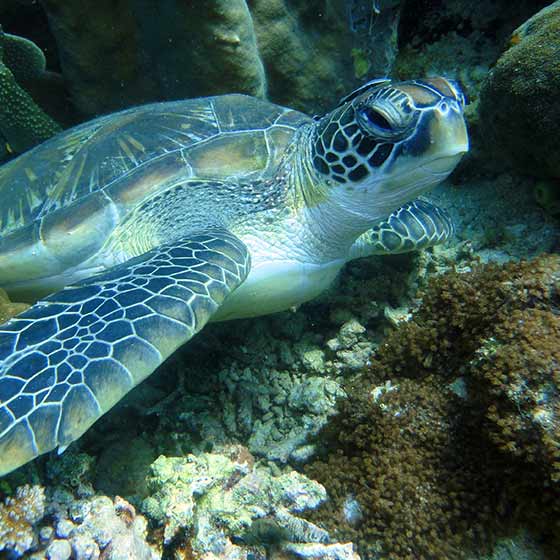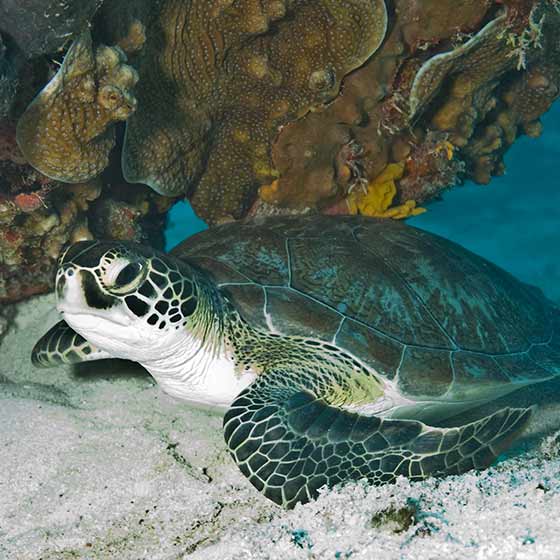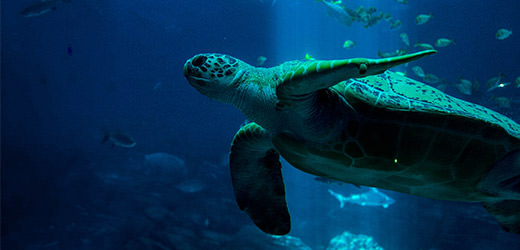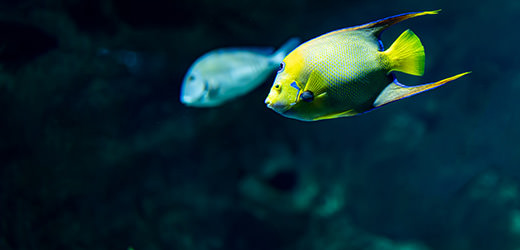Biology
More of a carnivore in its younger years, it becomes a herbivore in its adulthood.
At that point, it begins to graze underwater meadows. The adults travel very long distances between the sea grass fields where they feed and their nesting site.
The green turtle is the only sea turtle that doesn’t only visit beaches to nest, but also comes to warm itself in the sun.
Of all the species of sea turtle, the green turtle is the most heavily exploited. Some coastal populations consume its eggs, and adult animals are captured for their scales, their meat and their skin.
Endangered like all the other sea turtles, it is protected at the international level.




